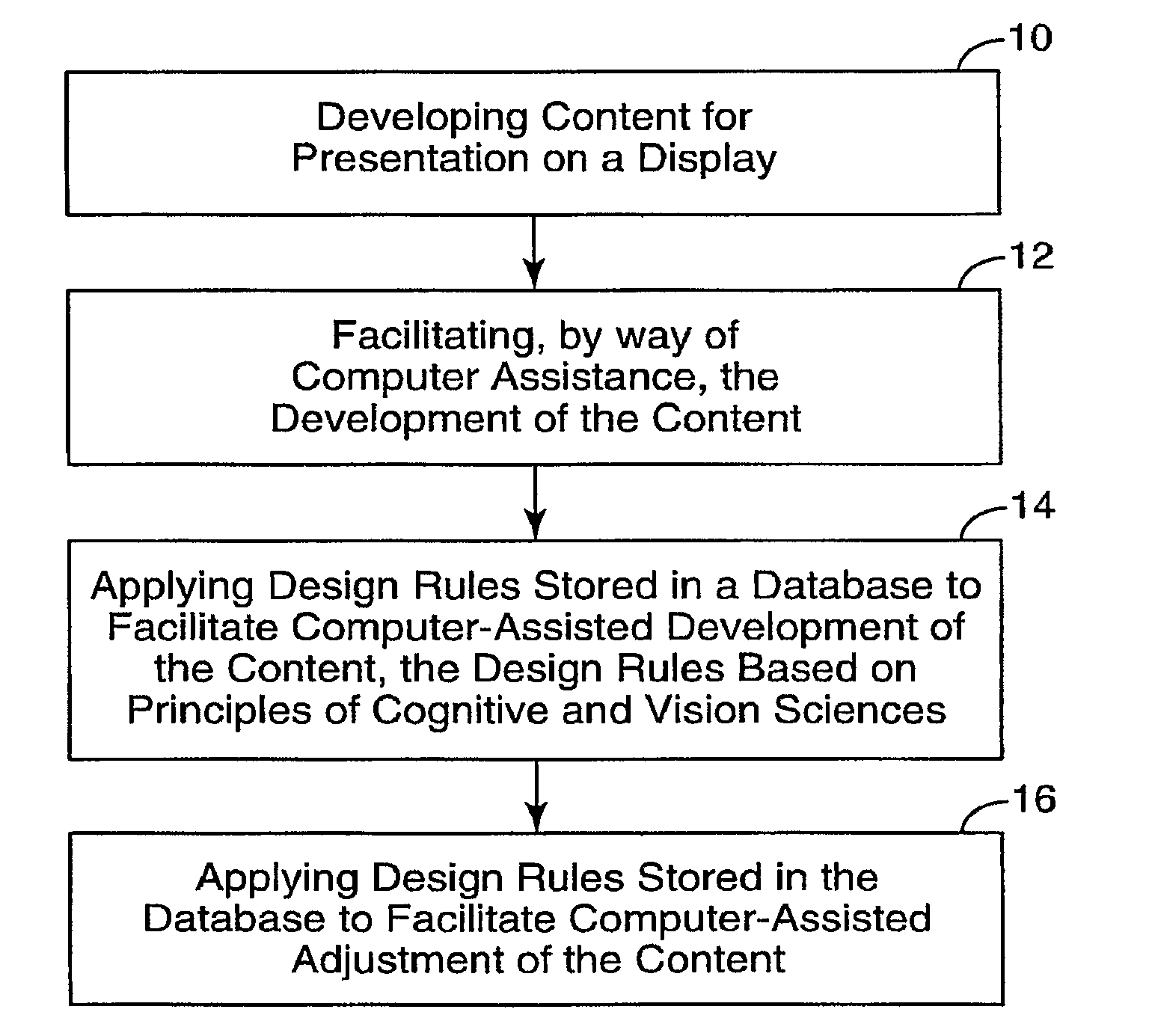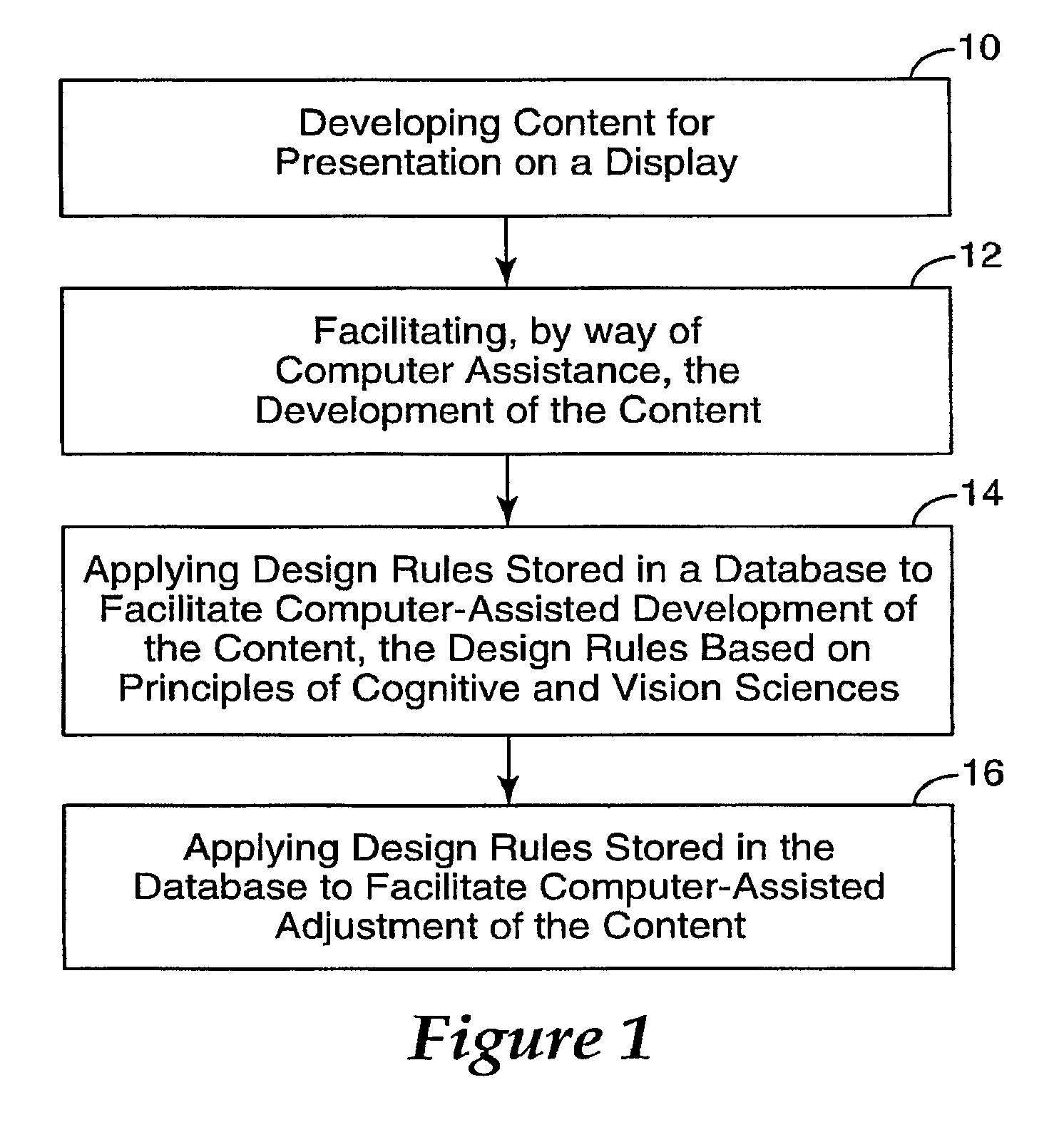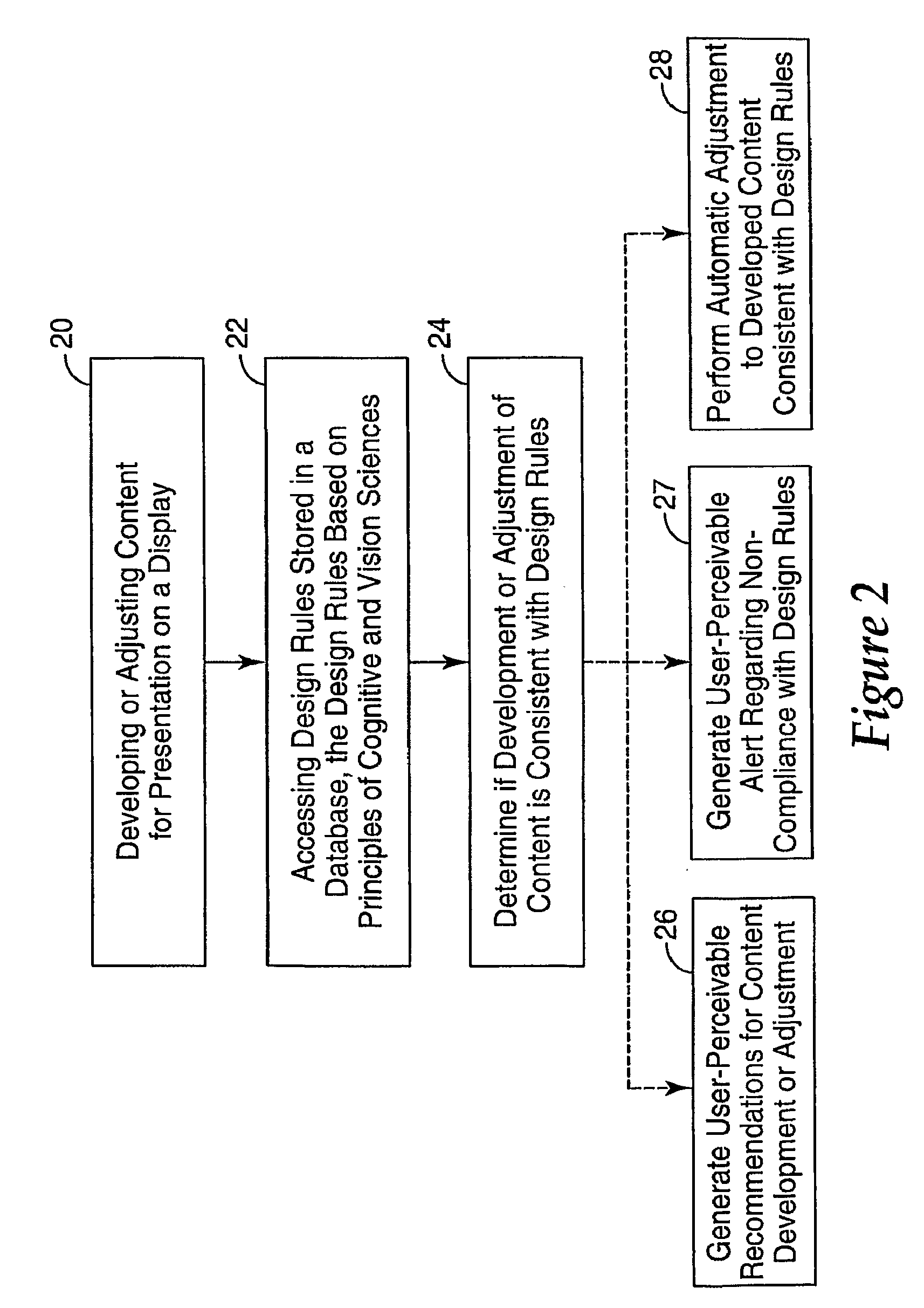Content development and distribution using cognitive sciences database
a database and cognitive science technology, applied in the field of content development and distribution using cognitive sciences database, can solve the problems of not providing tools to the designer, difficult if not impossible, and difficulty in imparting the skills of an accomplished designer to a less experienced designer, so as to maximize memory retention and recall, improve or optimize text readability
- Summary
- Abstract
- Description
- Claims
- Application Information
AI Technical Summary
Benefits of technology
Problems solved by technology
Method used
Image
Examples
Embodiment Construction
[0031]In the following description of the illustrated embodiments, reference is made to the accompanying drawings that form a part hereof, and in which is shown by way of illustration, various embodiments in which the invention may be practiced. It is to be understood that the embodiments may be utilized and structural changes may be made without departing from the scope of the present invention.
[0032]The present invention is directed to methods and systems for creating content for presentation on a display or a multiplicity of networked displays, and facilitating, by way of computer assistance, content creation in a manner consistent with principles based on human cognitive science and vision science. Methods and systems of the present invention are also directed to distributing and adjusting content for presentation on a display or a multiplicity of networked displays in a manner consistent with principles based on human cognitive science and vision science. Developing and adjusti...
PUM
 Login to View More
Login to View More Abstract
Description
Claims
Application Information
 Login to View More
Login to View More - R&D
- Intellectual Property
- Life Sciences
- Materials
- Tech Scout
- Unparalleled Data Quality
- Higher Quality Content
- 60% Fewer Hallucinations
Browse by: Latest US Patents, China's latest patents, Technical Efficacy Thesaurus, Application Domain, Technology Topic, Popular Technical Reports.
© 2025 PatSnap. All rights reserved.Legal|Privacy policy|Modern Slavery Act Transparency Statement|Sitemap|About US| Contact US: help@patsnap.com



